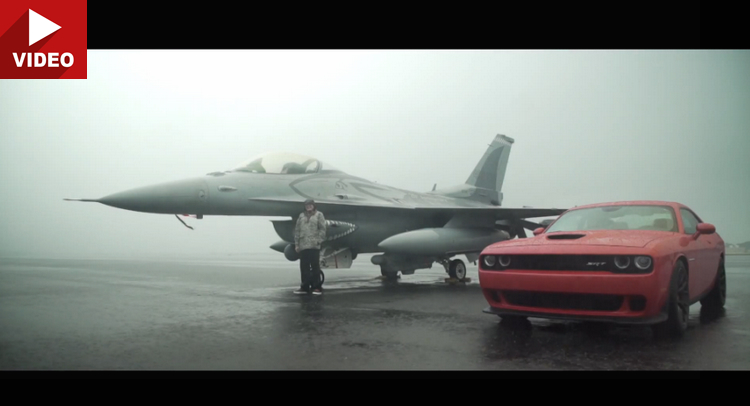Watching a performance car accelerate faster than a jet taking off is nothing new. The plane loses precious seconds building up its thrust and getting off the line, while the supercar usually does its 0-60 business pretty much instantly.
But that’s not the whole story. It never was. Once the jet nears takeoff speed, it will overtake the car and once its airborne, it will leave whatever you’re driving way, way behind. We’re going to go ahead and semi-spoil this one for you since the good folks at /DRIVE decided to do the stunt smack in the middle of a monsoon.
Before we go any further, let’s see what we have here. First of all it’s a Hellcat vs. Falcon battle. Yes, the F16 is codenamed ‘Falcon’, which is cool. Everything about Fighter Jets is cool. It’s afterburner pushes out thrust at 28.600 lbf, giving it a top speed of 1.320 mph (2.120 km/h).
The Hellcat is no slouch with its 707hp and 650 lb-ft, giving it a 1/4 mile run time of 10.8 seconds, all the way up to 199 mph (320 km/h). How relevant was all this during this little stunt? Completely irrelevant!
There’s absolutely no way you can put that power down during these conditions. The Hellcat has enough trouble as it is getting a great start off the line even in perfect conditions.
We’re still waiting to see somebody do car vs. jet on an aircraft carrier with an improvised runway and stop zone for the car. Get the fighter jet along side one of the fastest accelerating all-wheel drive cars on the market – say the Bugatti Veyron Supersport. And since we’re on a carrier, the Jet will use a catapult system which sends it pretty much instantly from a stand still to somewhere close to 277 km/h in just 80 meters. That’s no fewer than 3g’s pushing down on the pilot. They should be really close to each other for the first 100 km/h (62 mph) before the jet pulls away. And if you think a fast accelerating car can’t keep up with an F16 before actual take off, think again.



